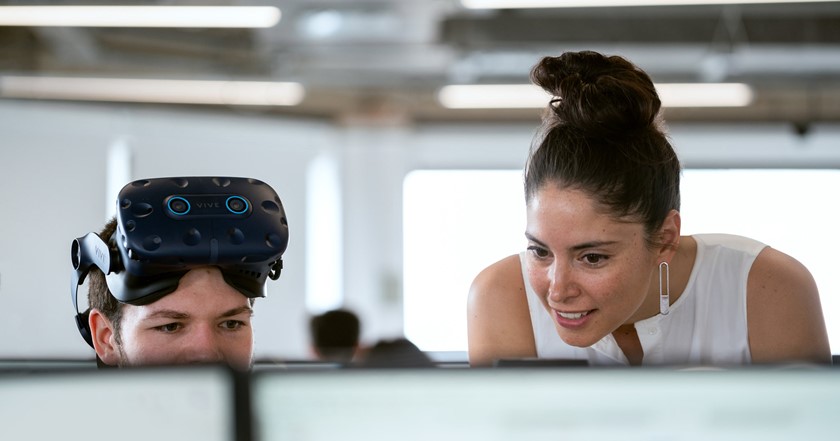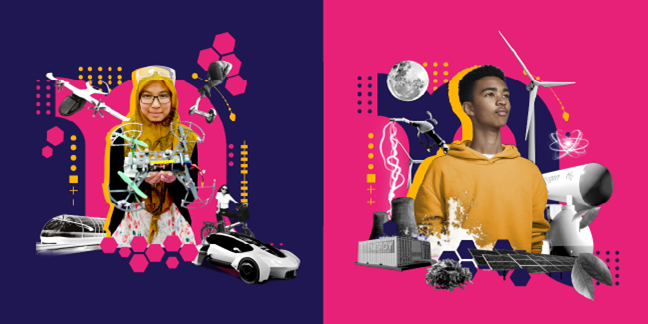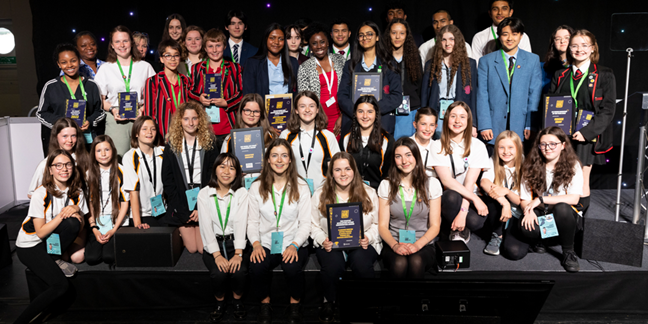Jun 23, 2022

by Marie Horton, Senior Research Analyst, EngineeringUK
Engineering is the backbone of innovation and invention. On this International Women in Engineering Day, I’d like to reflect on the increased productivity and innovation that comes with a more diverse workforce, that potentially the engineering sector is missing out on with such low representation of women. I’ve taken a look at female representation throughout the engineering workforce and how this is impacted by early perceptions of engineering.
Gender representation across the engineering workforce
Our recent briefing on women in engineering showed that 16.5% of the engineering workforce were women in 2021. Encouragingly this is up from 10.5% in 2010 but compared to the total workforce, where 48% were women, we see there is much work to be done to achieve gender equality in engineering.
Digging deeper into the data, we saw stark differences between proportions of women working at all levels in engineering compared with the total workforce.
Before I give you the stats, it might help to explain a couple of the terms used. Associate Professionals and Technical Occupations – these are roles that require and use technical knowledge and experience. Professional Occupations – this is used to describe roles that require a qualification, such as a degree. Managers, Directors and Senior Officials – these are the most senior roles within a company.
In engineering, the highest female representation overall was seen in ‘Associate Professional and Technical Occupations’ at 32%, then decreased with level of seniority to 22% in ‘Professional Occupations’ and 15% in ‘Managers, Directors and Senior Officials’. Comparable figures for the total UK workforce were higher at 51%, 49% and 36% respectively.
After taking age into account, which tends to be heavily linked to seniority, the differences between the engineering sector and total workforce remain. The greatest gaps in female representation between engineering and total workforce were seen in ‘Professional Occupations’, where there was a more than 24 percentage point (%p) difference across all age groups. Even in the ‘Associate Professional and Technical Occupations’, where the gap is smaller for the youngest workers, we see that this increased with age from a 14%p difference between engineering and the total workforce at age 18-24 years (37% vs 51% respectively) to a 26%p difference at age 65+ (16% vs 42%).
Perceptions of engineering start early
It’s perhaps not surprising that there are fewer women entering the workforce when the perception of engineering being a male-dominated environment starts at an early age and persists into adulthood. The Engineering Brand Monitor showed that a third of young people agreed that ‘boys would make better engineers than girls’. This was highly correlated with views of their parents, of whom 37% agreed that ‘there are natural differences between men and women that make men better suited to a career in engineering’, along with 10% of STEM secondary school teachers.
Additionally, 63% of young people aged 11 to 19 agreed that ‘girls face more barriers that make it harder for them to get ahead in engineering than boys’, and 65% of parents and 55% of secondary school STEM teachers agreed that ‘women face more obstacles that make it harder for them to get into engineering than men’.
Does this then change how girls view opportunities for themselves in engineering? We also saw that 35% of girls agreed that ‘being an engineer fits well with who I am’ compared with 53% of boys, and 39% of girls had an interest in pursuing a career in engineering compared with 63% of boys. This follows through to how many girls choose to study engineering as a subject, with young women making up just 18% of GCSE engineering students and 19% of engineering and technology undergraduate students in 2020/21.
So, whilst we know there has been some increase in women in the engineering workforce, there is still much work to be done by the engineering community. The sector must continue to work together to create and promote the engineering workforce as an inclusive and diverse working environment to attract more women into the profession and be able to tap into their skills, innovation and creativity into the future.
< Back to Blog



